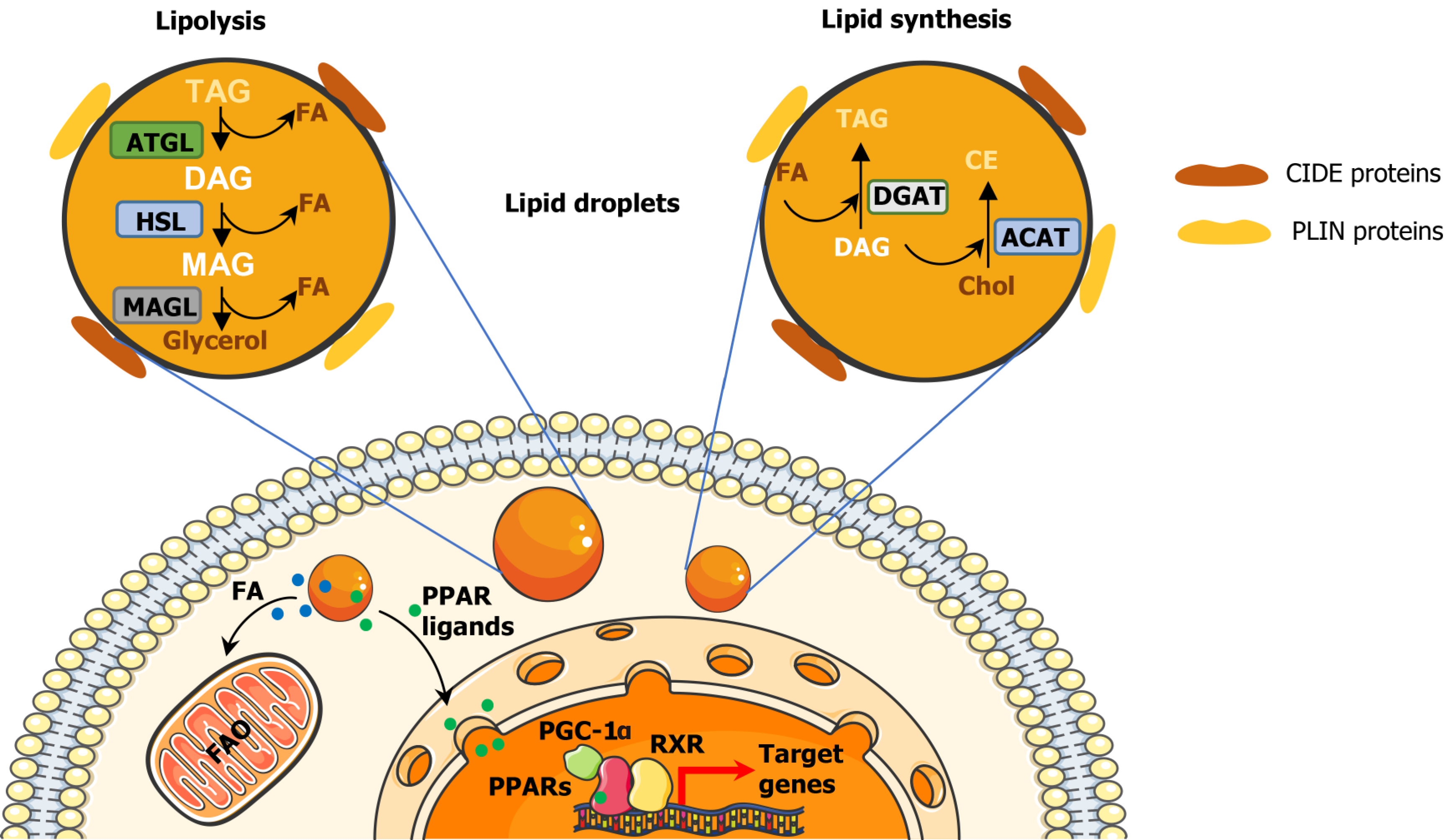Copyright
©The Author(s) 2021.
World J Stem Cells. Sep 26, 2021; 13(9): 1307-1317
Published online Sep 26, 2021. doi: 10.4252/wjsc.v13.i9.1307
Published online Sep 26, 2021. doi: 10.4252/wjsc.v13.i9.1307
Figure 1 Structure and cellular functions of lipid droplets.
Lipid droplets (LDs) have a hydrophobic core of neutral lipids, mainly cholesteryl esters and triglycerides surrounded by a monolayer of phospholipids. LDs are coated with peripheral and integral proteins such as cell death-inducing DFF45-like effector and perilipins proteins, and lipid metabolism enzymes implicated in lipid synthesis and lipolysis: diacylglycerol acyltransferases 1 and 2 (DGAT1 and DGAT2), acyl-CoA cholesterol acyltransferases 1 and 2 (ACAT1 and ACAT2), adipose triglyceride lipase, hormone-sensitive lipase and monoacylglycerol lipase. LDs play roles in energy supply, via fatty acid oxidation, and signalling, by producing lipid intermediates that include pro- and anti-inflammatory signalling molecules and peroxisome proliferator-activated (PPAR) ligands. Upon activation, PPARs together with the coactivator peroxisome proliferator-activated receptor gamma coactivator 1-alpha form a nuclear complex with RXR that binds to the DNA to activate the transcription of target genes. TAG: Triglycerides; CIDE: Cell death-inducing DFF45-like effector; PLIN: Perilipins; ATGL: Adipose triglyceride lipase; HSL: Hormone-sensitive lipase; MAGL: Monoacylglycerol lipase; FA: Fatty acid; CE: Cholesteryl esters; PGC-1α: Peroxisome proliferator-activated receptor gamma coactivator 1-alpha; DGAT: Diacylglycerol acyltransferases; ACAT: Acyl-CoA cholesterol acyltransferases; PPARs: Peroxisome proliferator-activated receptors.
- Citation: Royo-García A, Courtois S, Parejo-Alonso B, Espiau-Romera P, Sancho P. Lipid droplets as metabolic determinants for stemness and chemoresistance in cancer. World J Stem Cells 2021; 13(9): 1307-1317
- URL: https://www.wjgnet.com/1948-0210/full/v13/i9/1307.htm
- DOI: https://dx.doi.org/10.4252/wjsc.v13.i9.1307









